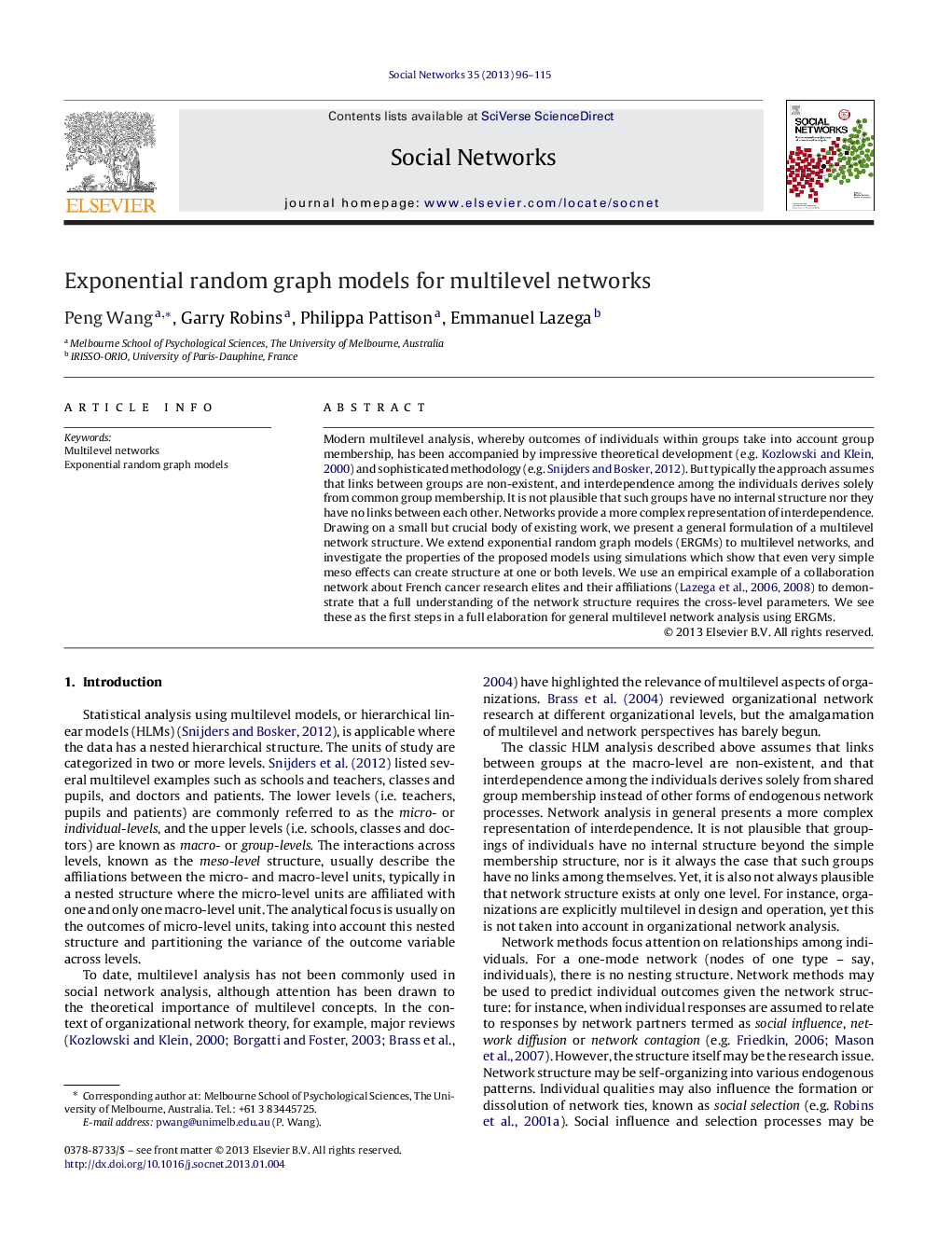| Article ID | Journal | Published Year | Pages | File Type |
|---|---|---|---|---|
| 1129540 | Social Networks | 2013 | 20 Pages |
Modern multilevel analysis, whereby outcomes of individuals within groups take into account group membership, has been accompanied by impressive theoretical development (e.g. Kozlowski and Klein, 2000) and sophisticated methodology (e.g. Snijders and Bosker, 2012). But typically the approach assumes that links between groups are non-existent, and interdependence among the individuals derives solely from common group membership. It is not plausible that such groups have no internal structure nor they have no links between each other. Networks provide a more complex representation of interdependence. Drawing on a small but crucial body of existing work, we present a general formulation of a multilevel network structure. We extend exponential random graph models (ERGMs) to multilevel networks, and investigate the properties of the proposed models using simulations which show that even very simple meso effects can create structure at one or both levels. We use an empirical example of a collaboration network about French cancer research elites and their affiliations (Lazega et al., 2006 and Lazega et al., 2008) to demonstrate that a full understanding of the network structure requires the cross-level parameters. We see these as the first steps in a full elaboration for general multilevel network analysis using ERGMs.
► A generalized multilevel network data structure is presented. ► Directed and nondirected ERGM specifications for two-level networks are proposed. ► Simulations show that simple interaction effects can create structure at both levels. ► Complicated within level structure can be explained by simple cross-level effects.
